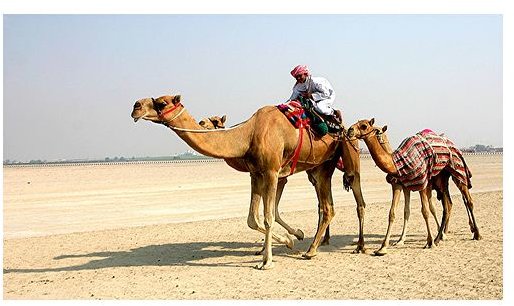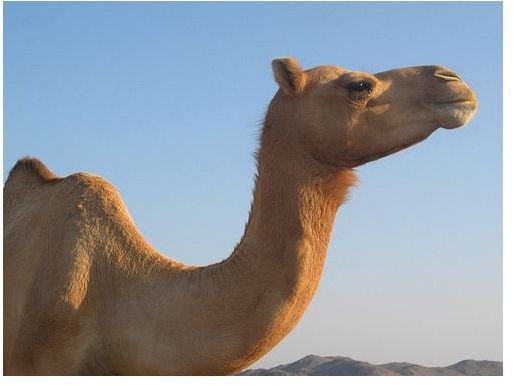Learn the Adaptations of the Camel to a Desert Environment
Camel – The Ship of the Desert
There is a reason why camels are known as the ship of the desert. For centuries these herbivorous animals have aided men crossing vast desert lands with ease because of their remarkable adaptations to the hot and harsh surroundings. The camels glide across desert sand just like a ship and can stay without food or water for weeks even when they are carrying heavy loads or transporting men.

While many know the camel humps are a major adaptation of a animal that helps them be suited for a desert environment. This makes them the most popular and dependable desert animal. However, other adaptations of the camel to a desert environment are also beneficial.
-
Eyelashes- Camels have long eyelashes that help protect the eyes from the sun and the blowing sand. While some say there are two rows of eyelashes, others believe that one row is eyebrows while the other a row of eyelashes.
-
Nostrils – Camels can close their nostrils completely so that no sand particles enter the nose.
-
Hump – A camel’s hump is for storage, but unlike common belief that it stores water; a hump actually stores fat tissues. When there is scarcity of food the fat is metabolised to provide energy. But since the fat in reaction with oxygen from the air yields 1111 g of water per 1000 g of fat, the fat tissue is a source of water too. A camel can survive a month without food and for about two weeks without water although it can at one time drink almost 46 litres (32 gallons) of water.
-
Lips – The lips are thick to help the camel eat the prickly shrubs growing in the deserts without getting cut.
-
Ears – There is a thick coat of hair even inside the camel’s ear to prevent sand particles from entering the ear.
-
Thick Coat – The thick fur on a camel’s body helps provide warmth during cold desert nights and insulate the body from heat during the day. The coat also helps the camel sweat less thus saving water.
-
Knees – Like knee guards, camels have thick covers on knees. These help when the camel is kneeling down and prevents the knee from getting burned from the hot desert sand.
-
Legs – The legs are long and thin to help the camel take longer strides in the sand and keep the body as far away as possible from the heat of the surface. They also help bearing heavy goods.
-
Hooves – The hooves have a broad, flat leathery pad so that when the camel walks, the pads spread out and prevent the feet from burying into the hot sand.
-
Body Temperature – A camel is a mammal but unlike other mammals its body temperature keeps fluctuating depending on the outside temperature. From 34°C to 41.7°C (93°F-107°F.) the temperature varies throughout the day and night. This helps the animal sweat less and conserves water.
-
Blood – The red blood cells of camels are oval in shape not like other mammals that have circular red blood cells. This is an adaptation to let the flow of blood continue even in a dehydrated state. As camels drink large amounts of water, these are also more stable to prevent them from rupturing due to osmosis.
It is thus clear that the camel’s body is best suited for a desert habitat, withstanding sand, heat, food and water scarcity with its tough exteriors and interiors.
Reference
https://www.woodlands-junior.kent.sch.uk/Homework/adaptations/camels.htm
https://www.vtaide.com/png/camel-adaptations4.htm
Image Source
Photos by stevebrownd50 and xikita (cc/Flickr)
